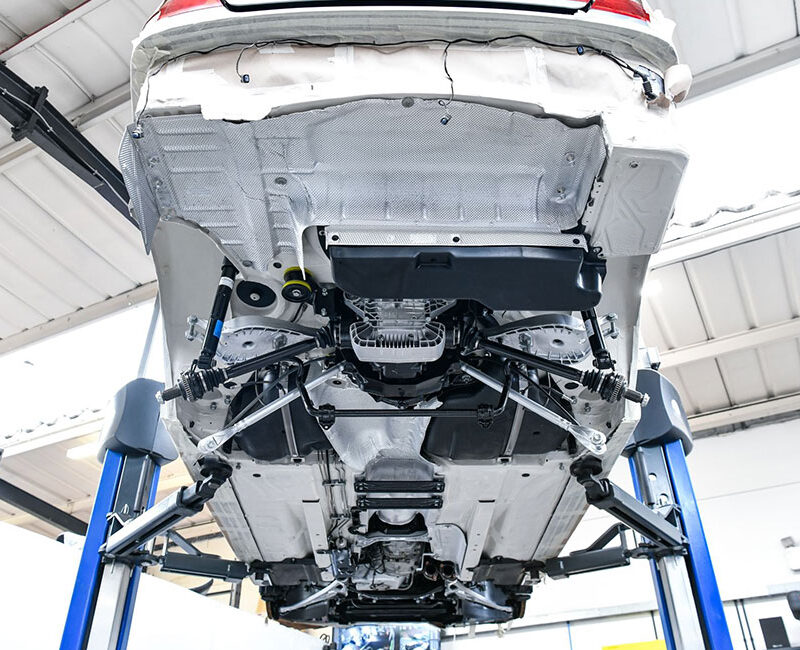From Road to Track: What to consider when converting a Road Car for Track Use
Transforming a road car into a track-ready machine is a dream for many motorsport enthusiasts. The process involves various modifications and adjustments to make the car safe, competitive, and enjoyable on the track. This extensive guide covers key aspects of converting a regular road car into a formidable track car, balancing performance, safety, and regulatory compliance.
Assessing Your Base Vehicle
- Choose the Right Car: Ideally, start with a vehicle that has a strong chassis, good handling characteristics, and a robust powertrain. Popular choices include the Mazda MX-5, BMW 3 Series, and Honda Civic Type R.
- Initial Inspection: Ensure the car is in good mechanical condition. Address any existing issues before starting the conversion.
Safety Modifications
- Roll Cage: Installing a roll cage enhances structural rigidity and driver safety. This is particularly important if you plan to participate in high-speed events.
- Racing Seats and Harnesses: Upgrade to racing seats and harnesses to ensure you remain securely seated during high-speed manoeuvres.
- Fire Safety: Install a fire extinguisher system, especially if you’re modifying the fuel system or engine significantly.
- Emergency Kill Switch: An emergency kill switch is a vital safety feature that can quickly cut off the car’s power in case of an emergency.
Performance Upgrades
- Suspension: Upgrade to performance-oriented suspension components like stiffer springs, dampers, and anti-roll bars for improved handling.
- Brakes: High-performance brake pads, discs, and fluid are essential for enduring the rigours of track use.
- Engine: Depending on your goals and budget, engine modifications can range from simple air intake and exhaust upgrades to more complex turbocharging or engine swapping.
- Weight Reduction: Remove unnecessary weight, such as rear seats, insulation, and non-essential interior components. However, ensure you maintain structural integrity.
- Aerodynamics: Simple aerodynamic mods like front splitters and rear spoilers can improve downforce and stability.
- Tyres: Invest in high-quality track tyres that offer better grip and handling compared to standard road tyres.
Legal and Regulatory Considerations
- Compliance: If you plan to use the car on public roads, ensure your modifications comply with road safety regulations.
- Insurance: Notify your insurer about the modifications, as they can affect your policy.
- Track Regulations: Familiarise yourself with the regulations of your local track or racing series to ensure your car meets their standards.
Upgrading the Cooling and Electrical Systems
- Cooling: Upgraded radiators and oil coolers are essential to manage the increased engine temperatures during track use.
- Electrical: Simplify the electrical system to essentials, removing unnecessary components to reduce weight and complexity.
Testing and Fine-Tuning
- Shakedown Runs: Perform shakedown runs to identify any issues with the new setup. This can be done on a local track day or in a controlled environment.
- Data Logging: Use data loggers to gather information on the car’s performance for further fine-tuning.
- Continuous Improvement: Track car development is an ongoing process. Use each track day as an opportunity to learn and make incremental improvements.
FAQs for Converting a Road Car for Track Use
Q: How much does it cost to convert a road car to a track car? A: Costs vary widely based on the type of car and the extent of modifications. Basic safety upgrades can start from a few thousand pounds, while high-end modifications can cost significantly more.
Q: Can I convert my daily driver into a track car? A: Yes, but be aware that the modifications might affect the car’s comfort and practicality for daily use.
Q: What should be my first step in converting my car for track use? A: Focus on safety upgrades first, such as installing a roll cage, racing seats, and harnesses.
Q: How do I ensure my modified car remains road-legal? A: Keep abreast of local vehicle regulations and consult with automotive experts to ensure compliance.
Q: Is professional help necessary for converting a car for track use? A: While some modifications can be DIY, professional assistance is recommended for complex upgrades, especially those related to safety.
In conclusion, converting a road car to a track car is a fulfilling project that enhances your driving experience on the circuit. While the focus is often on performance, it’s crucial not to overlook safety and regulatory compliance. With thoughtful planning, careful execution, and ongoing maintenance, your road car can successfully make the transition from cruising the streets to dominating the track.

